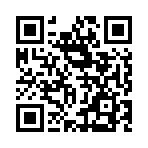Summary
Syntax
Returns
You can define a summary manually, in front matter, or automatically. A manual summary takes precedence over a front matter summary, and a front matter summary takes precedence over an automatic summary.
To list the pages in a section with a summary beneath each link:
{{ range .Pages }}
<h2><a href="{{ .RelPermalink }}">{{ .LinkTitle }}</a></h2>
{{ .Summary }}
{{ end }}Automatic .Summary may cut block tags (e.g., blockquote) in the middle, causing the browser to recover the end tag. See automatic summary for details and for ways to avoid this.
Depending on content length and how you define the summary, the summary may be equivalent to the content itself. To determine whether the content length exceeds the summary length, use the Truncated method on a Page object. This is useful for conditionally rendering a “read more” link:
{{ range .Pages }}
<h2><a href="{{ .RelPermalink }}">{{ .LinkTitle }}</a></h2>
{{ .Summary }}
{{ if .Truncated }}
<a href="{{ .RelPermalink }}">Read more...</a>
{{ end }}
{{ end }}The Truncated method returns false if you define the summary in front matter.
